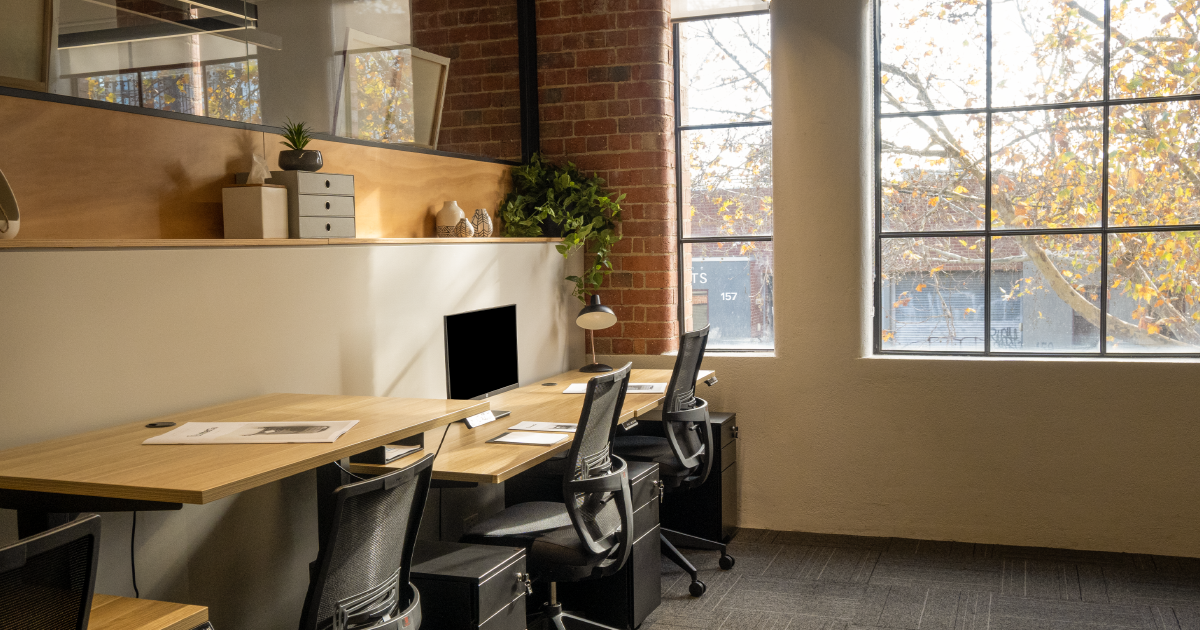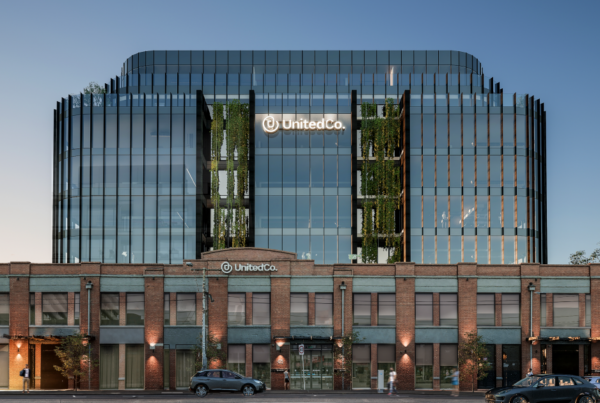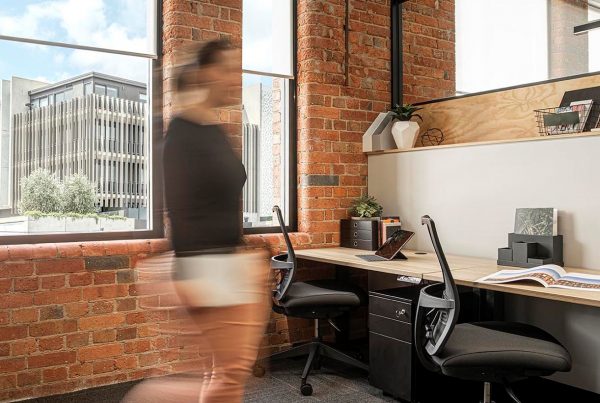
How office space affects productivity
In the fast-paced and competitive world of business, how office space affects productivity stands as a cornerstone for success. While numerous factors influence an employee’s performance, none prove as influential as the environment in which they operate. Among these spaces, the office stands out as the epicenter of work activity, making its design and layout crucial elements in maximizing productivity.
From the physical arrangement of furniture to the ambient lighting and overall atmosphere, the office space significantly impacts the efficiency and motivation of its occupants. In this exploration, we delve into the fascinating realm of how office space affects productivity, unveiling the intricate interplay between the physical environment and human performance. Understanding these dynamics can empower organizations to craft workspaces that foster creativity, collaboration, and ultimately, exceptional results.
What is the importance of an office workspace?
Here are some key reasons why the office workspace is crucial:
Productivity
A well-designed workspace can significantly improve air quality and enhance employee productivity. An organized and efficient layout can reduce distractions and make it easier for employees to focus on their tasks. Additionally, the right combination of lighting, ergonomics, and amenities can create a comfortable environment that promotes efficient work.
Collaboration
The office serves as a hub for collaboration and teamwork. A thoughtfully planned workspace with quiet spaces and informal meeting areas can encourage spontaneous interactions. It also encourages idea-sharing and effective communication among colleagues. When it comes to understanding how office and personal space affect productivity, can lead to increased creativity and problem-solving abilities within the team.
Employee Well-being
A positive and conducive office environment can contribute to employee well-being and the morale of employees. Furthermore, natural light, fresh air, proper ventilation, comfortable furniture, and access to amenities like relaxation areas, wellness rooms, and private rooms can all contribute to employee health, reduced stress, and increased job satisfaction.
Company Culture
The physical workspace plays a significant role in shaping the company culture. A well-designed office can reflect the values and identity of the organization. This instills a sense of pride and belonging among employees.
Talent Attraction and Retention
In today’s competitive job market, the workspace can be a differentiating factor for attracting and retaining top talent. An appealing and functional office can act as a magnet for prospective employees, while a positive work environment can encourage existing employees to stay loyal to the organization.
Brand Image
The office space can also serve as a representation of the company’s brand image. A modern, innovative workspace can portray the organization as forward-thinking and dynamic, while a traditional and elegant setup can convey professionalism and stability.
Creativity and Innovation
A well-designed workspace and creative spaces can stimulate creativity and innovation. Offering flexible and inspiring areas for brainstorming sessions or creative thinking can lead to the generation of new ideas and solutions, enhancing employee productivity levels.
Efficient Operations
The layout and organization of the office can impact the efficiency of day-to-day operations. A well-structured workspace can streamline workflows, optimize processes, and improve overall operational efficiency, creating a more pleasant working environment.
Client Impressions
For businesses that host clients or partners in their home offices, the workspace becomes an important factor in creating a positive first impression. A well-kept and thoughtfully designed private office space can instill confidence and trust in the organization’s capabilities.
In summary, the office workspace is not merely a physical space where work is conducted; it is a dynamic and influential environment that can shape employee performance, company culture, and the overall success of the organization. As such, investing in creating a functional, appealing, and employee-centric office space can yield significant benefits. Particularly for businesses in the long run.
Read More About Getting to Know the Top 5 Benefits of Private Offices
What is the advantage of an office space?
The advantage of an office space lies in its ability to create a conducive environment for work, fostering productivity, collaboration, and employee morale. When it comes to how office space affects productivity, a thoughtfully designed office can significantly enhance productivity by minimizing distractions and providing employees with the tools and resources they need to perform their tasks efficiently. When the physical layout of the office aligns with the workflow, employees can move seamlessly between tasks, saving time and maintaining focus on their responsibilities.
Moreover, an office space serves as a hub for collaboration and teamwork. In-person interactions allow for spontaneous idea-sharing, problem-solving, and effective communication among colleagues. Face-to-face interactions can often lead to deeper connections and understanding, fostering a sense of camaraderie and teamwork that may be challenging to replicate in virtual work settings.
Employee morale is another crucial advantage of well-designed office space. Natural light, proper ventilation, ergonomic furniture, and access to amenities like break rooms or relaxation areas all contribute to employee comfort and job satisfaction. A comfortable and healthy workspace can reduce stress levels and promote a positive workplace. Ultimately this leads to increased motivation and decreased absenteeism.
Read More About 5 Ways to Save Cost on Office Space
How office space affects productivity
Beyond individual morale, the office space plays a pivotal role in shaping a company’s culture. Furthermore, the physical environment can reflect the organization’s values and identity, reinforcing a sense of belonging and purpose among employees. A well-crafted office can be a powerful tool in fostering a positive company culture that inspires and motivates employees to work toward common goals.
Furthermore, the office space acts as a key factor in attracting and retaining top talent. In today’s competitive job market, job seekers often consider the work environment and office aesthetics as essential aspects of their decision-making process. An appealing and functional office can be a significant draw for prospective employees, while an uninspiring or poorly designed space may deter potential candidates.
Notably, the office space also contributes to the overall brand image of a company. The physical workspace can convey a company’s ethos, values, and level of professionalism to clients, partners, and visitors. A modern and innovative office may portray the organization as forward-thinking and dynamic, while a more traditional and elegant setup can signify stability and reliability.
In conclusion, the advantage of an office space extends far beyond being a place where work is conducted. A well-planned and optimized office can drive productivity, facilitate collaboration, nurture employee well-being, shape company culture, attract talent, and bolster the organization’s brand image. It remains an essential aspect of the business landscape, influencing both the performance of employees and the perception of the company in the eyes of clients and stakeholders.
Why is it important to have a good office layout?
Having a good enough office design and layout is of paramount importance as it directly impacts several crucial aspects of the workplace environment and has a huge impact on employee performance. Furthermore, here are the key reasons why a well-designed office layout is essential:
Employee Productivity
A well-thought-out office layout can optimize the flow of work, reduce unnecessary movements, and minimize distractions. This can lead to increased productivity as employees can focus more on their tasks and efficiently navigate through their work responsibilities.
Promoting Collaboration
The office layout plays a significant role in how office space affects productivity. By creating open and accessible spaces, employees are encouraged to interact, share ideas, and work together on projects. This can lead to improved teamwork and innovation within the organization.
Enhancing Communication
An effective office layout can facilitate communication and information sharing. When employees are physically closer to each other and key departments, it becomes easier to exchange information, address issues promptly, and coordinate activities.
Boosting Employee Well-being
A good office or workplace design and layout considers the well-being and comfort of employees. It ensures proper lighting, ventilation, and ergonomic seating which can contribute to a healthier and more pleasant workplace. Standing desks which are used for extended periods can increase energy levels. These offer healthier workspace benefits. Workplace designs can reduce stress levels and enhance employee satisfaction.
Adapting to Changing Needs
A flexible office layout can adapt to the changing requirements of the organization. As teams and projects evolve, the workspace can be easily reconfigured to accommodate new dynamics and ensure that the office remains efficient and relevant. Breakout space is a much sought-after option when it comes to key elements people search for in a workspace.
Efficient Space Utilization
With real estate costs often being a significant expense for companies, a well-designed office layout optimizes space utilization. It ensures that every square foot is used effectively, minimizing wasted space and maximizing the return on investment.
Office Environment with Natural Light
The physical layout of an office and conference rooms can influence the company’s culture. An open, transparent, and inclusive workplace layout can foster a positive and collaborative atmosphere, promoting trust and camaraderie among employees. Natural light and indoor plants around the office space affect productivity and improve overall physical and mental well-being. Indoor Plants can promote improved air quality, which improves the workplace design and creates a healthy environment. Furthermore, air quality is essential for employee well-being and offers healthier workspace benefits. Such distractions like inadequate lighting can increase unproductive work environments, so make sure to make use of windows that allow light into the physical work environment.
Attracting and Retaining Talent
A modern and appealing office layout can be a powerful tool for attracting and retaining top talent. Job seekers are more likely to be drawn to an organization with an inviting and functional workspace, which can set the company apart from competitors.
Improving Client Impressions
For companies that host clients or partners in their offices, a good office layout can create a positive impression. In saying so, an organized and professional workspace can instill confidence in the company’s capabilities and professionalism.
In summary, a good office layout is vital for creating a productive, collaborative, and employee-centric workplace. It not only impacts the day-to-day operations of the organization but also contributes to the overall morale and satisfaction of employees. Additionally, investing in a well-designed office layout can lead to increased efficiency. It also leads to creativity, and employee engagement, ultimately benefiting the organization’s success and growth.
What are the advantages of office space in a shared workspace?
Office spaces in shared workspaces offer numerous advantages, making them a popular choice for freelancers, startups, and even established businesses. Here are some of the key advantages of office space in a shared workspace:
Cost-Effectiveness
Shared workspaces provide a cost-effective solution for businesses, especially startups and small companies. By sharing the space and its amenities with other occupants, businesses can access professional office facilities at a fraction of the cost of setting up a traditional office.
Flexibility
Shared workspaces offer flexible leasing options, allowing businesses to scale up or down as needed. This flexibility is particularly valuable for companies experiencing growth or those with fluctuating space requirements.
Ready-to-Use Infrastructure
Shared workspaces are typically fully furnished and equipped with essential infrastructure such as office furniture, internet connections, meeting rooms, collaborative spaces, and breakout spaces. This saves businesses the time and effort required to set up an office from scratch.
Networking Opportunities
Furthermore, being in a shared workspace exposes businesses to a diverse community of professionals from various industries. This presents ample networking opportunities, facilitating collaborations, partnerships, and potential client interactions.
Read More About How Much Space Do You Need Per Person?
Collaborative Environment
Shared workspaces can foster collaboration and a collaborative atmosphere where like-minded individuals and businesses work in proximity. This office design can affect productivity. Furthermore, it sparks creativity, knowledge exchange, and the opportunity to gain insights from others in different fields. Workplace design plays an important role in employee satisfaction.
Increased Productivity
Shared workspaces provide social space enabling employees and an environment conducive to productivity. The presence of other motivated individuals working alongside can create a sense of accountability and motivation among office workers improve productivity and boost overall productivity.
Amenities and Services
Shared workspaces often come with additional amenities and services, such as reception services, mail handling, printing facilities, and communal kitchen areas. Furthermore, these conveniences contribute to a smoother workflow and improved employee experience.
Work-Life Balance
Many shared workspaces offer flexible working hours, allowing individuals to tailor their work schedules to achieve a better work-life balance. In saying so, this can lead to increased job satisfaction and employee well-being.
Access to Expertise and Events
Shared workspaces frequently host workshops, seminars, and events that provide valuable learning opportunities and access to industry experts. Additionally, these events can contribute to the professional growth and development of remote employees in their remote teams.
Global Presence
Some shared workspace providers have a global network of locations. This can be advantageous for businesses that require a physical presence in different cities or countries without the need for establishing separate offices.
Reduced Administrative Burden
Shared workspaces often handle administrative tasks like office maintenance and cleaning, leaving businesses free to focus on their core operations.
In summary, office spaces in shared workspaces offer a plethora of advantages, from cost-effectiveness and flexibility to networking opportunities and increased productivity. They cater to the evolving needs of modern businesses, promoting collaboration, community, and convenience in a dynamic and professional setting.
What is the difference between office space and coworking space?
Office space and coworking space are two distinct concepts that cater to the different preferences and needs of professionals and businesses. The primary difference between office designs lies in their setup, utilization, and the level of flexibility they offer.
Office Space
Office space typically refers to a traditional, private, and dedicated workspace that is leased or owned by a single business or organization. These spaces are customized according to the specific requirements and preferences of the company. They offer privacy and exclusivity, as only employees of the same organization work within these private spaces. Office spaces provide a sense of ownership and control over the physical workspace. They allow employees and businesses to design the layout, decor, and infrastructure according to their branding and corporate culture. They are ideal for established companies seeking a permanent and stable base of operations, offering more control over the environment and operations.
Coworking Space
On the other hand, coworking spaces are shared work environments where individuals, freelancers, startups, and small businesses work side by side in a communal setting. These spaces are managed by coworking providers and offer various flexible membership options. In saying so, these include daily passes, monthly subscriptions, or even pay-as-you-go arrangements. Coworking spaces provide a dynamic and collaborative atmosphere, promoting networking and interactions among members from diverse industries. Furthermore, they typically come fully furnished with amenities like high-speed internet, meeting rooms, communal areas, and shared office equipment. Coworking spaces are favored by freelancers, remote workers, and startups seeking a cost-effective solution that provides a professional office environment without the long-term commitments and administrative burden associated with traditional office leases.
In summary, the main difference between office space and coworking space lies in the level of exclusivity and flexibility. Office space offers a dedicated and private setting for a single business. On the other hand, coworking spaces provide a shared and communal environment for individuals and small teams. The choice between the two largely depends on the specific needs, preferences, and growth stage of the organization or individual professionals seeking a workspace solution.
Office Space at United Co.
United Co. offers a range of flexible workspaces in a collaborative environment that fosters creativity and productivity. Open the door for new realms of collaboration for your business, in our shared workspace in Fitzroy! If you would like to book a tour, get in touch via our website today!




